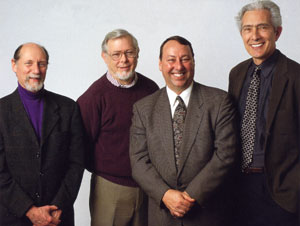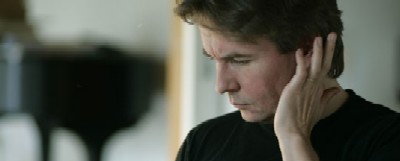
I have long been fascinated (and amused) by the arcane Spermists’ theory, who held the belief that the sperm was in fact a ‘little man’ (in Latin, an ‘homunculus’) that was placed inside a woman to grow into a child. This seemed to them to neatly explain many of the mysteries of conception. It was later pointed out that if the sperm was indeed an homunculus—identical in all aspects but size to an adult—then the homunculus must have sperm of its own, [and, in turn, the homunculus’s sperm are themselves micro-homunculi with their own micro-sperm, which, in turn, are nano-homunculi, and so on]. This led to a logical ‘reductio ad absurdum’—an endless chain or infinite regress of [uncountable trillions of] homunculi within homunculi! This was not considered by [reality-challenged] Spermists to be a fatal objection, however—insofar as it neatly explained how it was that, in the biblical Adam, all [future human beings] had sinned: the whole of humanity [and its misdeeds] ‘was already contained in Adam’s loins’.”
— Esa-Pekka Salonen, 2008.
I wanted to compose a piece that would be very compact in form and duration, but still contain many different characters and textures. In other words, a little piece that behaves like a big piece... I decided to call my piece ‘Homunculus’ despite the obvious weaknesses of the spermists’ thinking, as I find the idea of a perfect little man strangely moving.”T he performance by the Guarneri String Quartet and the Johannes String Quartet together last night in Kansas City was amazing. The program included:
— Esa-Pekka Salonen.
- William Bolcom: Octet
- Esa-Pekka Salonen: Homunculus (Johannes Quartet)
- Derek Bermel: Passing Through (Guarneri Quartet)
- Felix Mendelssohn: Octet

T he Salonen ‘Homunculus’ quartet has many different expressions of parallelism and simultaneity in it—which is surprising, maybe, considering that the term ‘homunculus’ is ordinarily associated with concepts of hierarchy and encapsulation of things within things.

T here are rapid sixteenth-note figures and sextuplets that come in waves—liquid waves, violins spilling, viola spilling, cello spilling. The patterns evoke a sense of ‘being-as-process’, as opposed to ‘being-as-object’.
F rom the title, one might expect that Salonen had been inspired by—or is exploring—individual subjectivity: the interior experience of an individual self and the self-regard that each of us has through introspection, mapping and remembering our own history.
B ut instead Salonen’s ‘Homunculus’ suggests that a quartet is (can be) one individual-in-aggregate, or, conversely, that a single individual is (can be) a collocation of multiple selves, each of whom has its own real existence and identity.
I t’s not so much what the self ‘is’ that interests Salonen, I think, but what the self does (hears, sees, thinks, anticipates, intends, ... ) and how it does it. It’s all ‘process’. Identity has no reality except as it is enacted through acts and processes and events. ‘Homunculus’ not only asserts (abstractly) that this is so; it also defends the argument by way of quartetly examples and illustrates the cognitive and emotional range of self-as-process. ‘Homunculus’ illustrates how rapidly selfhood can be constructed/revealed—with gestures and textures that unfold over a few seconds only. Salonen’s craftsmanship here is clear, but it’s never over-worked. Organic plausibility, palpable Truth.
S ome portions of the work have ‘sectional’ writing for three parts (Vn2, Vla, Vc, say) and the fourth part (Vn1, say) is essentially autonomous, doing its own thing. Several bars/seconds elapse, and the ‘section’ has been reconstituted by a different trio (Vn1, Vn2, Vc, say) and a different one (Vla) is doing the extemporizing. The effect is vividly evocative of the ebb and flow of our normal thought-patterns—the shifting of attention amongst a variety of ideas and ‘mental sets’.
W ithin the model ‘self’ is a concept embodied in a [measurably] finite number of critical sub-units of the overall system of ‘mental sets’ that are accessible to our ordinary experiences. If there is no involvement of one or more parts of this ‘self structure’, then we feel uninvolved; our internal ‘observer’ will be felt to be not present.
S ure, the self can be ‘divided’—have a look at Jon Elster’s and others’ writings about this. But because each self exists in a set of subsystems that are totally finite, the ‘division’ can’t go on indefinitely. After a couple of hierarchical levels, ‘self’ can’t be divided further without either losing the normal sense of the word ‘self’ or division’s becoming arbitrary, unsupported by evidence from ordinary experience. There is a philosophical/aesthetic reason why Salonen wrote this for quartet and not sextet or octet or something larger. In ‘Homunculus’ we get a pretty specific statement from Salonen about how finite each of us really is...

S o there are in fact some neuropsychological models that still characterize how our minds work in terms of homunculus-like mappings and correspondences, but the encapsulations are finite—there is no infinite regress or vast hierarchical matryoshka-type nesting.
I n fact, self watching self watching self … is implausible on its face. Every day we are amazed at our forgetfulness and limited attention. Have a listen to ‘Homunculus’ in concert if you have the opportunity to do so. I think you’ll find Salonen saying (abstractly, musically) that we are each complex selves, but we are not arbitrarily or infinitely complex. (Salonen convinces me, and I take comfort in his having succeeded in this.)
O ne of the ‘complex’ things about ‘complex’ music is its quality of refusing to present a straightforward object (as for instance in much minimal sculpture): it is always perceived in the act of underlining its own ongoing and provisional nature. It doesn’t present the illusion of not being an illusion—in large measure because of the continual problematization of the performance/interpretaton context.”T o fully explain how we experience what we do in this piece (or any other), a theory of consciousness would have to address real-time self-knowledge, self-understanding, self-awareness, self-monitoring, and goal setting: our selves as we know and understand and experience them; our selves as they are seen by others and used as a basis for their recognizing us as us; our selves as the sense of values and personal history and memory that constitutes our own recognition of who we are.
— Brian Ferneyhough, Responses to a Questionnaire on ‘Complexity’, 1990.
B ut, our minds (selves) do quite a lot of processing that’s ‘parallel’, not hierarchical or serial. We walk and chew gum at the same time; we contemplate and monitor several ideas at once; we process the concurrent expressions in this Salonen quartet and observe our own spontaneous reactions as we do this.
F or whatever forms and depths the ‘division’ of the self plausibly may have, though, the extent of the division is limited to the finite resources that in fact constitute ‘self’ within the system of mental sets that constitute our psyche. And those finite resources change on a moment-by-moment timescale. For example, the tutti and sectional structures in this 12-minute Salonen quartet do not place demands on us that are as great as the parts of the composition where the voices diverge from each other. As the processes unfold, the evolving cognitive demands—for the performers and for us listeners—are not excessive, and the musical result is coherent, pleasurable, beautiful.
T he narrative arc is compelling, and the effort of the collected selves apprehending this Salonen quartet is richly rewarded. I’ll have to get ahold of a copy of the score, to get a more detailed sense of how Salonen’s design accomplishes so much in such a short piece.
F our, five, six, eight voices at a time are about my own cognitive limit, however—which stands in stark contrast to the recent maniacal, parallel-not-hierarchical IVF exploits of Octo Mom to explore far higher cardinalities and polyphonies in one household.
- Johannes String Quartet page at Frank Salomon Associates
- Guarneri String Quartet page at Herbert Barrett Mgt
- Guarneri Quartet retirement message on Arnold Steinhardt website
- Derek Bermel website
- William Bolcom and Joan Morris's website
- Esa-Pekka Salonen website
- Annas G. A French homunculus in a Tennessee court. Hastings Center Report 1989; 20:1-22.
- Elster J. Sour Grapes: Studies in the Subversion of Rationality. Cambridge Univ, 1985.
- Elster J, ed. The Multiple Self. Cambridge Univ, 1987.
- Herold E. Stem Cell Wars: Inside Stories from the Frontlines. Palgrave Macmillan, 2007.
- Scott C. Stem Cell Now. Plume, 2006.
- Sell S, ed. Stem Cells Handbook. Humana, 2003.
- Stem Cells information at U.S. NIH.gov
- Stout D, Harris G. Obama reverses stem cell limits Bush imposed. New York Times, 07-MAR-2009.
- Talbot M. The Universe as hologram. [Every part of a hologram/phantasm encodes all the information possessed by the whole hologram--and so only contrast or signal intensity is enhanced by having more than just a small piece of it.]
- Homunculus at Bio-Medicine.org
- Homunculus at Principia Cybernetica
- Jurgen Hanggi neuroscience website (with neuro homunculi)

No comments:
Post a Comment